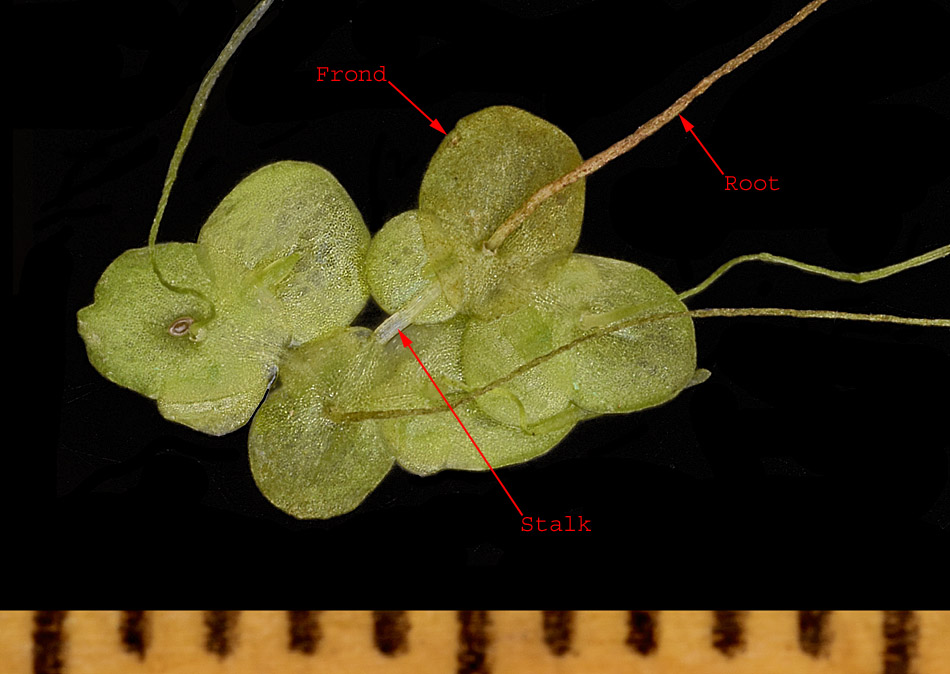 | Turionifera: Answers to key questions leading to this species.
 |
Fronds 1-2 times longer than wide, bases rounded, the stalks thin, white,
often decaying; colonies smaller, 1-several plants. NOT [Fronds 2-3.5 times longer than wide, abruptly narrowed to
green, persistent stalks 2-20 mm long; colonies 3-50 plants formed from fronds
connected by persistent stalks.] |
 |
Plants often forming turions; fronds 1-4 mm long with lower
surfaces more intensely red than upper surfaces; papillae mostly distinct on
midline of upper surface; seeds with 30-60 indistinct ribs. NOT [Plants lacking distinct turions; fronds 1-8 mm long with lower surfaces less
intensely red than upper surfaces; papillae often not distinct; seeds with 8-15
distinct ribs.]
|
|
 | Lemna: Answers to key questions leading to this genus.
 |
Roots present, 1-21 per frond; fronds flat or gibbous, air spaces present
and veins 1-21; daughter fronds and flowers arise in marginal pouches. NOT [Roots absent; fronds 3-dimensional (globular), without air
spaces and without veins; daughter fronds arise from terminal pouches; flowers
borne in dorsal cavities on upper frond surface.] |
 |
Roots 1 per frond; fronds green or reddish below, usually narrower but if
obovate, then 4 mm long at most; veins difficult to distinguish, usually 3.
NOT [Roots more than 1 per frond; fronds purplish brown below,
obovate to circular, up to 10 mm long; veins visible, 7 or more.] |
|

